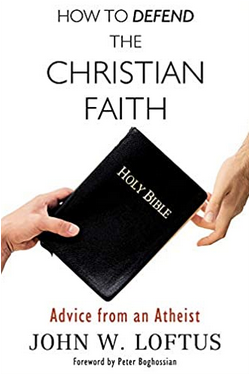Here are two recent links to an extremely helpful breakdown of the money problem, written by Michael Alter, author of the fantastic book, The Resurrection: A Critical Inquiry. ONE) Follow the Money Trail: Faith-Based Education and Publishing in Apologetics (Part I); and TWO) Follow the Money Trail: Faith-Based Education and Publishing in Apologetics (Part II)
Matthew Ferguson, a doctoral candidate in Classics at the University of California, Irvine, commented on this in a post that is now gone. They both know the problem well. Michael Alter, because he must fund his own research, and Matthew Ferguson, because for an atheist scholar to be gainfully employed in his field (and be able to pay off his educational loans) isn't too promising, compared to others who are believers. This is good, really good. I especially like Ferguson's comment under the essay itself, from which I'll quote below:


